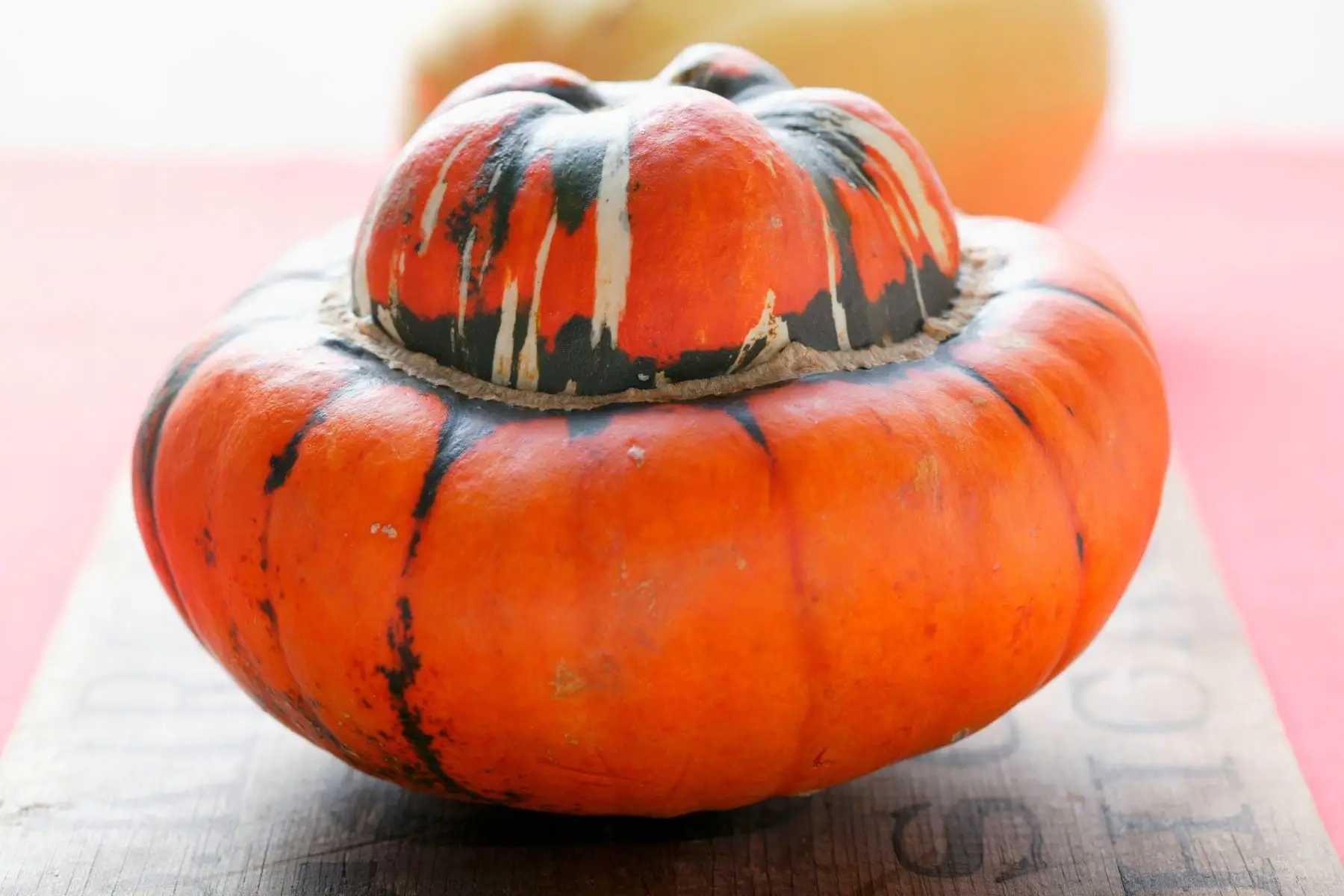Last Updated on October 8, 2022 by Real Men Sow
It is orange-green and white with some warts and is also known as French Turban or Turk’s Cap. This is an older variety of French Turban, which dates back to the 1820s. They can grow up to 12 inches in diameter. It was very easy to grow, and it didn’t attract squash bugs. They are often used as a gourd due to their beauty, but I will be eating it to compare to other winter squashes.
Planting Turk’s Turban Seeds
Days to Germination: 10-20 days
After the soil has warmed and any danger of frost has passed, sow Turk’s Turban seedlings in spring. Plant the seeds in rows or hills and make sure to plant seeds at least one-half inch below the surface.
Plants should be spaced at least 6 feet apart in every direction. The ideal soil temperature to sow seeds is 55°F.
Growing Turk’s Seedlings
It’s best to nick Turk’s Turban seedlings. After sowing, soak the seeds in water for at least 24 hours before planting. Start seeds indoors in areas that have a short growing season. This is 4 to 6 weeks before the last freeze. Make sure to use large pots so that the roots don’t become bound.
How to Grow Turk’s Turban Winter Squash Plants
- Ideal Soil pH: 5.5 – 6.5.
- Where to Grow: in full sun.
Turk’s Turban plants, like other Cucurbits, are heavy feeders. You can plant them in rich, loose soil. The soil should drain well and provide ample fertilizer regularly. Regular fertilizer feedings and a side dressing will make a significant difference in the health and size of your plant.
Watering Turk’s Turban Squash
Water them regularly, especially during dry periods or the fruit growth stage. Keep the soil moist but not wet. Inadequate watering can lead to premature ripening. Especially during the first growth stage, weeds should be removed regularly. You can keep the weeds under control by adding a layer of compost or mulch to the soil.
Train vines so they go in the right direction. As needed, slowly and carefully turn the vines. Each day, move them a little. To encourage larger fruit growth, trim the vines and remove tertiary plants.
Insects and Pests Affecting Turk’s Turban Squashes
During the growing season, many insects can infest plants. Before insects infest your garden, it is essential to have an insect control program. These are the most common insects that cause problems:
- Cucumber Beetles
- Squash Vine Borers.
- Squash Bugs
Depending on where you live, a variety of pests may also be causing problems. Follow the instructions on the label to apply insecticides as necessary. Problems with deer and rabbits are also possible. To keep them away, it’s best to add fencing.
Plant Diseases Affecting Turk’s Turban Plants
Most squash, being a Cucurbita family member, is susceptible to many bacteria and fungus diseases. Powdery mildew, bacterial wilt and powdery mildew are two of the most common.
In hot and humid environments, plant disease is more common. These problems can be avoided by a strong and healthy plant. Plant disease can quickly spread. Use fungicides immediately to treat any signs of disease.
Harvest Time For Turks Turban Squash
Days to Maturity: 95 – 120 days.
Before harvesting, let the fruit ripen and allow the shell to harden. Harvest them, however, before they freeze.
Plant Hardiness
Turk’s Turban plants do not have the ability to withstand extreme temperatures. Frost can be an issue in spring and autumn. Cover the plants if frosty or near-frosty temperatures are anticipated.
How to store turban squash?
Whole turban squash can be stored in cool, dry places away from direct sunlight for up to three months. It will keep in the refrigerator for up to four days after it has been sliced.


